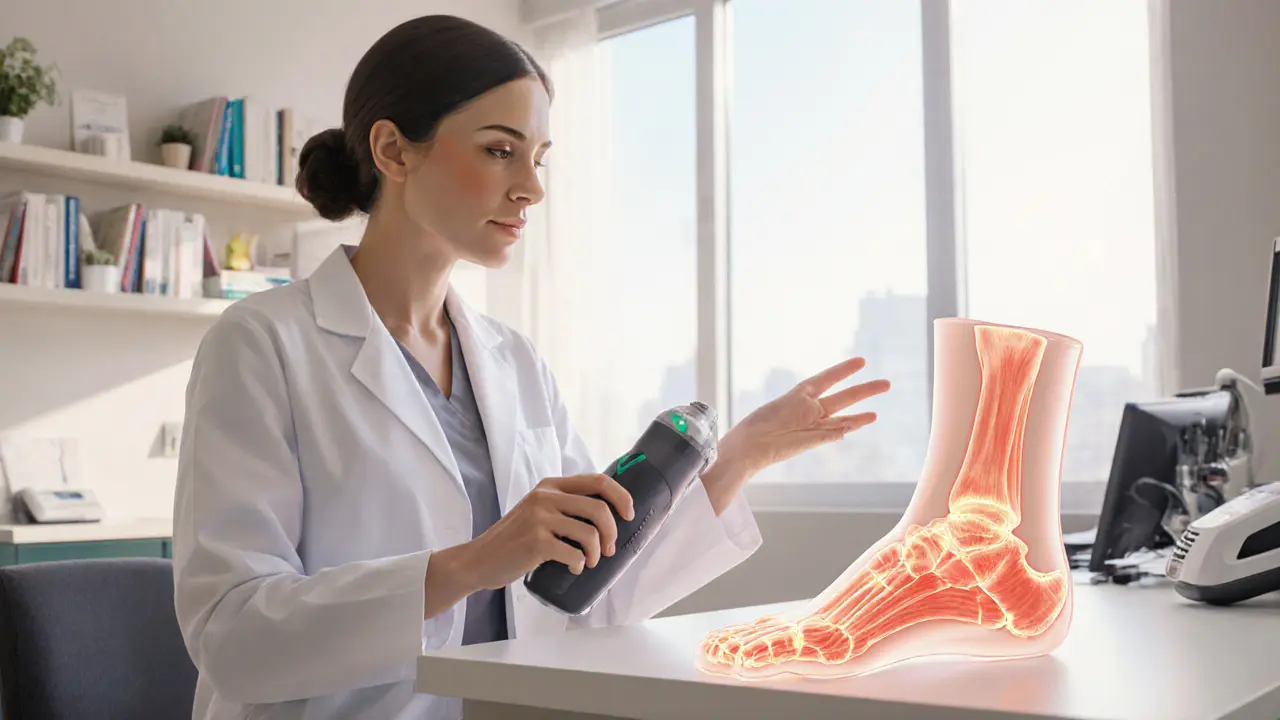
Do Podiatrists Recommend Foot Massagers? Expert Insights & Guidelines
Discover whether podiatrists endorse foot massagers, the health benefits, safety tips, and how to choose the right device for foot pain relief.
If you spend long hours on your feet, a foot massager can feel like a quick vacation for your soles. It’s not just a luxury – regular use can ease sore muscles, improve circulation, and even help you sleep better. In this guide we’ll cut through the hype, show you the main kinds of foot massagers, and give you practical tips so you can pick the right one without wasting money.
First off, a foot massager does more than just feel nice. The pressure and kneading action stimulate blood flow, which helps carry oxygen and nutrients to tired muscles. Better circulation can reduce swelling after a long day or a hard workout. Many people also notice less foot pain from conditions like plantar fasciitis, because the gentle stretch loosens tight fascia.
Beyond the physical, a quick five‑minute session can calm the nervous system. The rhythmic motion triggers the release of endorphins – your body’s natural feel‑good chemicals – which can lower stress and improve mood. If you have trouble falling asleep, a short foot massage before bed can signal your body it’s time to wind down.
Foot massagers come in three basic styles: shiatsu rollers, airbags, and heat‑plus‑vibration units. Shiatsu models have rotating nodes that mimic a therapist’s hands. They’re great if you like deep, pinpoint pressure. Airbag versions use inflatable chambers to squeeze the foot, offering a gentler, more uniform hug – perfect for people who find strong pressure uncomfortable.
Heat‑plus‑vibration devices combine warm air or infrared heat with gentle vibrations. Heat opens up blood vessels, so the massage works more efficiently. If you’re looking for a spa‑like experience at home, this combo is worth the extra cost.
When you shop, keep these practical points in mind:
Finally, set a budget. You can find basic models for under $50, while premium units with heat and multiple programs can cost $150 or more. Decide which features matter most to you and match them with a price you’re comfortable paying.To get the most out of your foot massager, use it 2‑3 times a week for 10‑15 minutes per session. Start with the lowest intensity, then increase as your feet adapt. Combine the massage with simple stretches – like pulling your toes back toward your shin – for extra flexibility.
Remember, a foot massager isn’t a replacement for professional medical care. If you have a serious foot injury, diabetes, or circulation problems, check with a doctor before regular use.
With the right device and a few easy habits, you’ll turn sore, achy feet into a source of daily relief. Give it a try – your legs will thank you.

Discover whether podiatrists endorse foot massagers, the health benefits, safety tips, and how to choose the right device for foot pain relief.